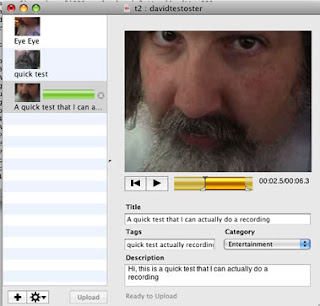Yahoo is letting outside Web sites use information from its own catalog of geographic information, thus allowing programmers to employ the Yahoo data and services into their own applications.
The company now provides an interface to the data, said Dan Catt, an engineer and geotagging buff at Flickr, Yahoo's photo-sharing site. The catalog gives locations a numeric identifier--where on Earth IDs, or WOEIDs, to various locations.
"Yahoo have opened up their geo database," Catt said in a blog entry. One specific example: the Sydney Opera House has the WOEID of 28717584.
The service is part of what Yahoo calls the Yahoo Internet Location Platform, a service currently in beta testing that's designed to help developers build geographic features into the Internet.
Expect more news on this at O'Reilly's Where 2.0 conference, which begins in earnest on Tuesday in Burlingame, Calif. Yahoo will preview the location platform at the conference, according to the Yahoo Developer Network Web site. Catt is giving one of those speeches on Wednesday.
The service fits neatly into the Yahoo Open Services plan, aka YOS, under which the company is trying to make its Web site a foundation for other applications, either built directly on Yahoo properties or employing services over the network on outside sites.
The Yahoo Internet Location Platform provides programmers "with the vocabulary and grammar to describe the world's geography in an unequivocal, permanent, and language-neutral manner," the site said. "The Internet Location Platform is designed to facilitate spatial interoperability and geographic discovery; users can traverse the spatial hierarchy, identify the geography relevant to their users and their business, and in turn, unambiguously geotag, geotarget, and geolocate data across the Web."
According to documentation, there are about 6 million WOEIDs, including postal codes, cities, time zones, and suburbs. So far, though, natural features and bodies of water aren't included yet.
According to former Yahoo employee Simon Willison, Yahoo got the geographic data through its 2005 acquisition of WhereOnEarth.
The WOEID interface permits operations such as translating a place name from one language to another, looking up the WOEID for a landmark, and supplying a list of likely IDs that match a specific place.
It also can let programmers find the "parents" of a specific WOEID. For example, Hearst Castle's parent is the town of San Simeon, whose parent is San Luis Obispo County, whose parent is California, whose parent is the United States.
It also permits finding neighbors--for example, towns near other towns or countries near other countries. It doesn't assign WOEIDs down to the level of addresses, though.
Read more!













































